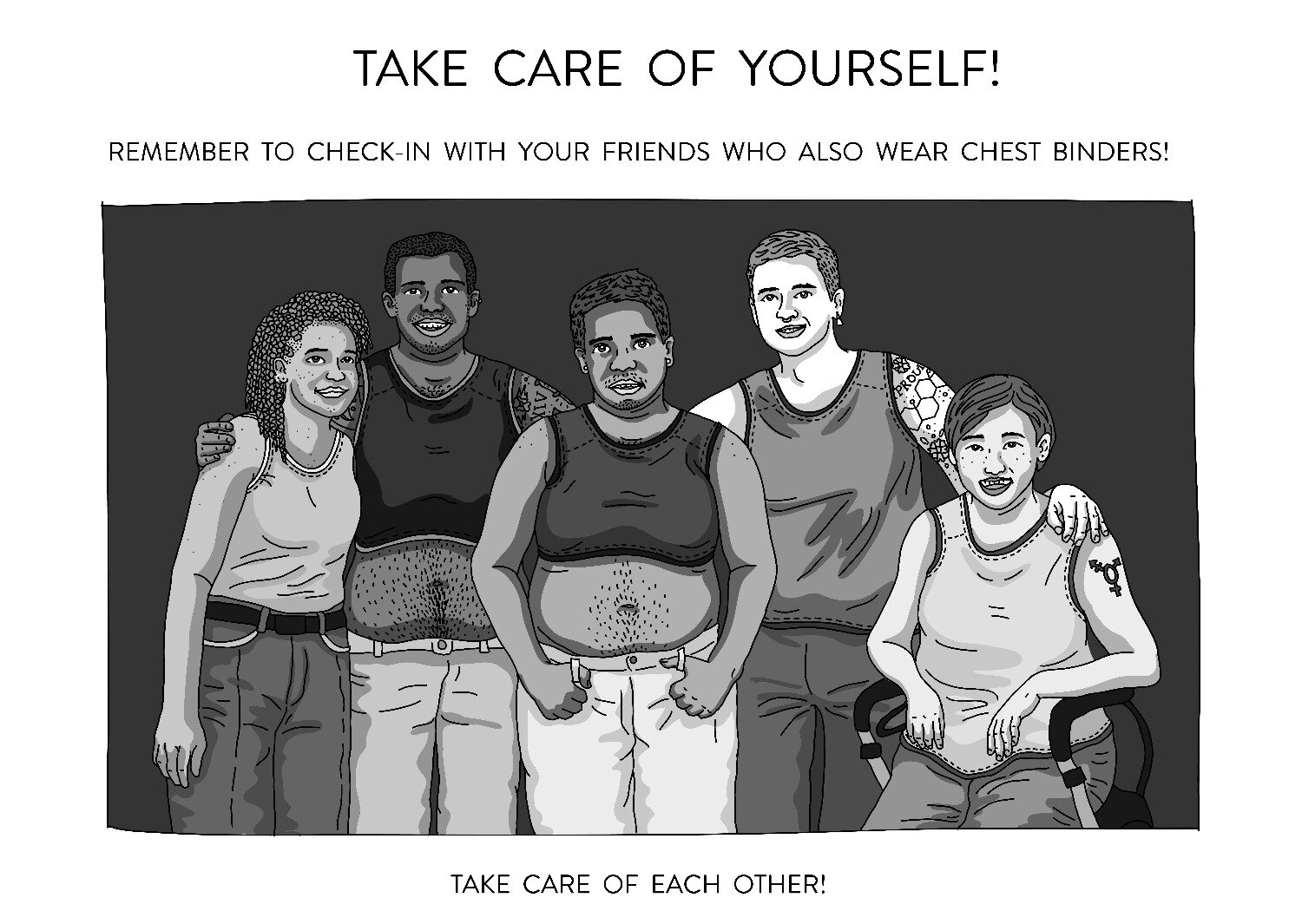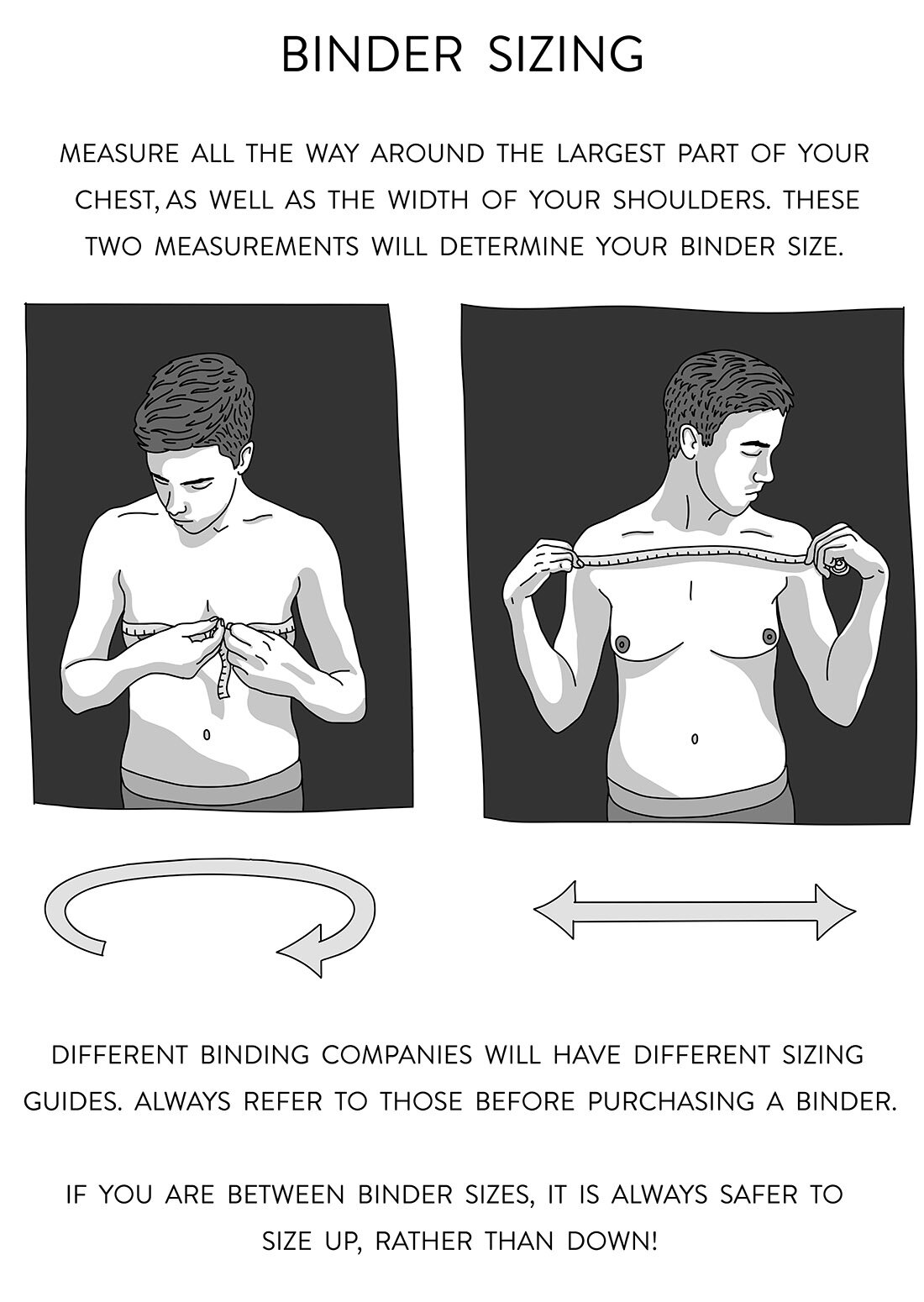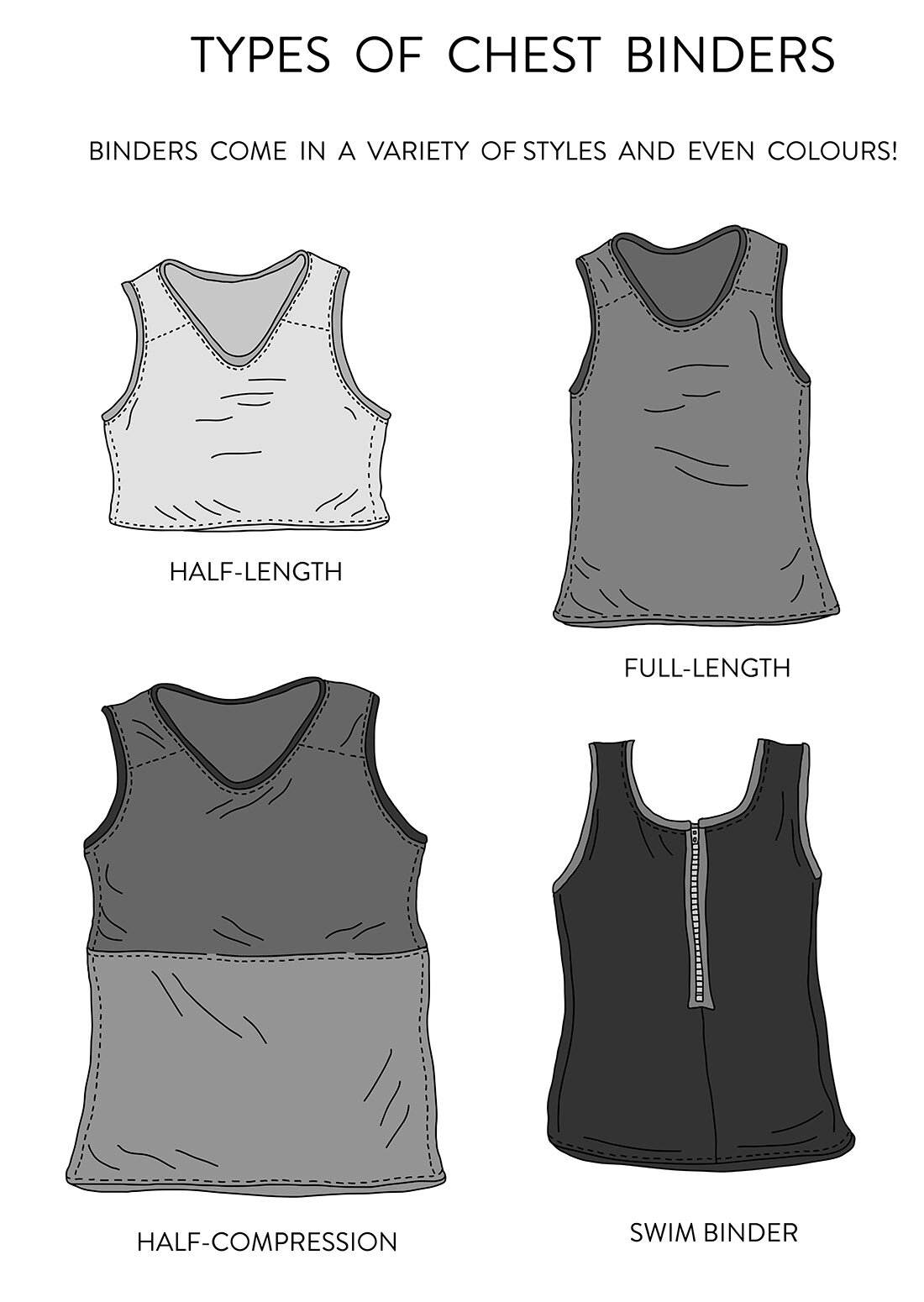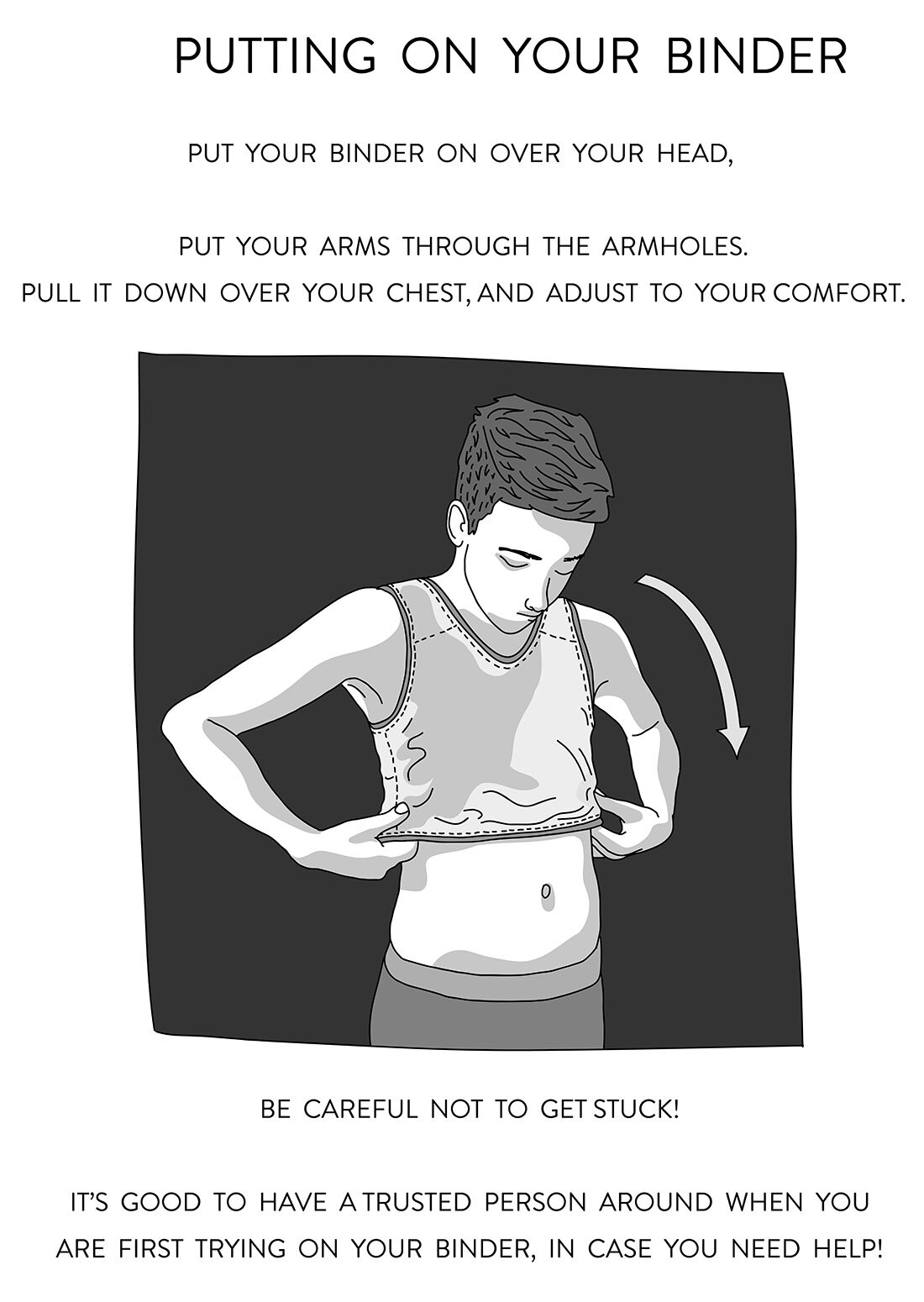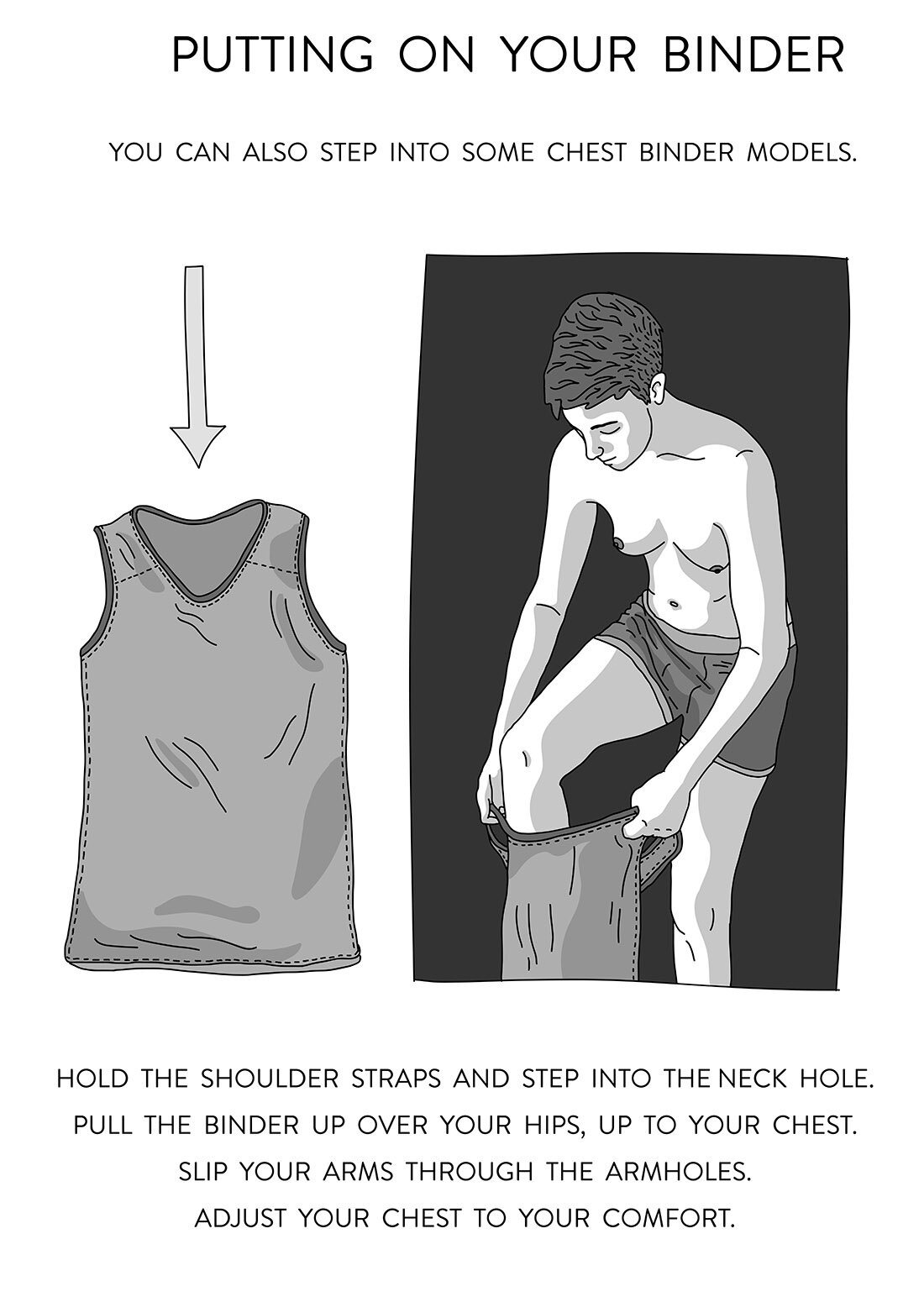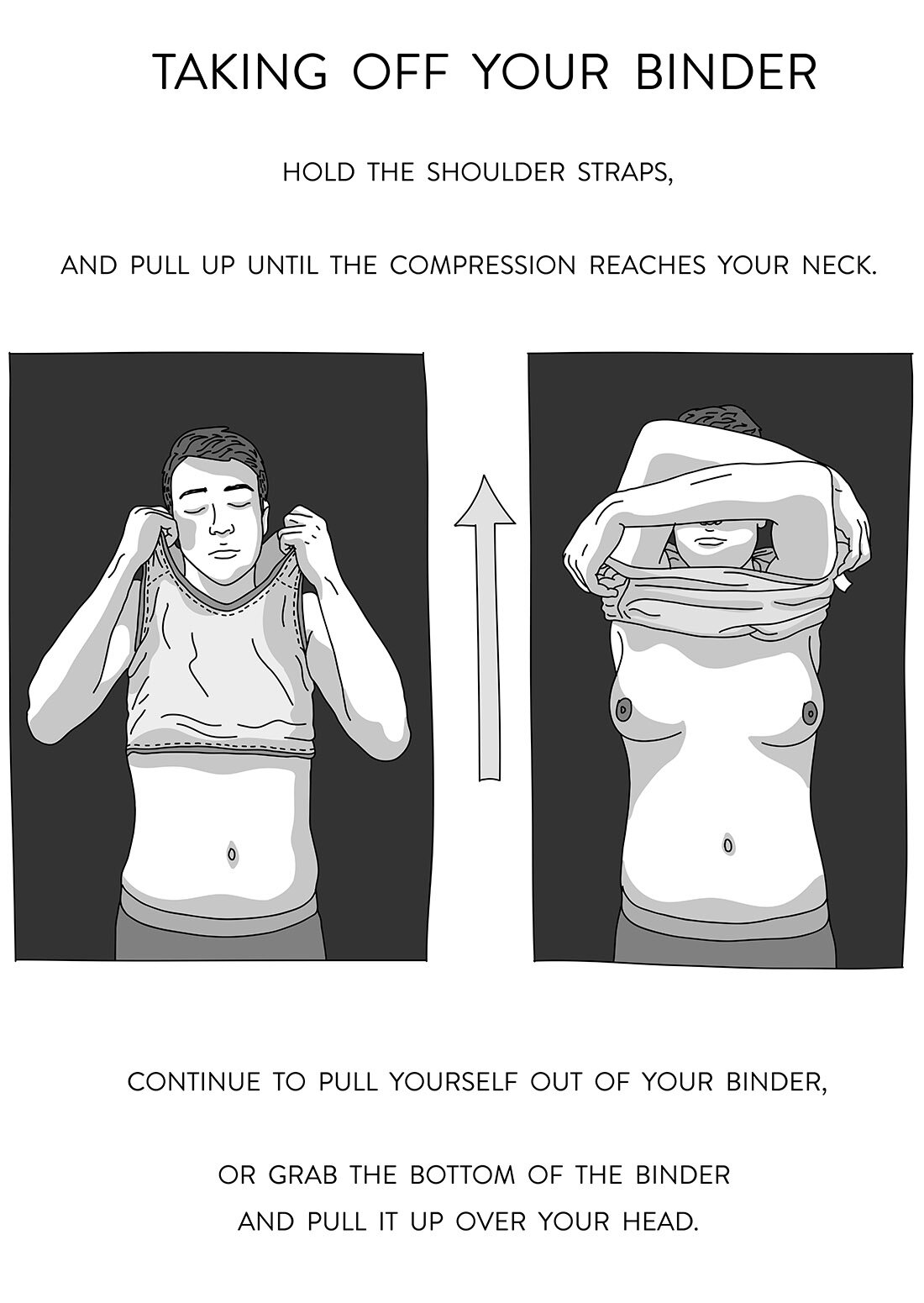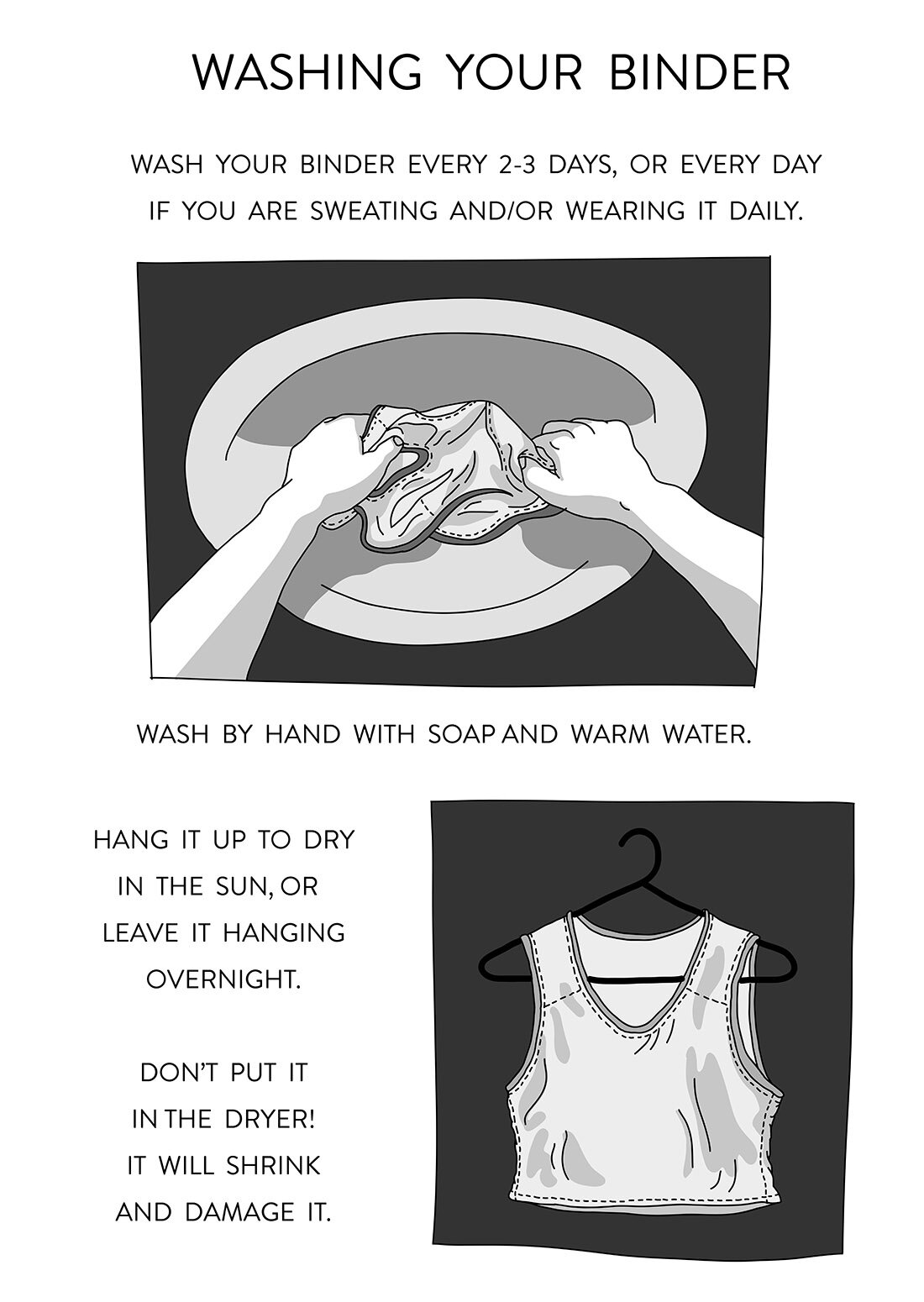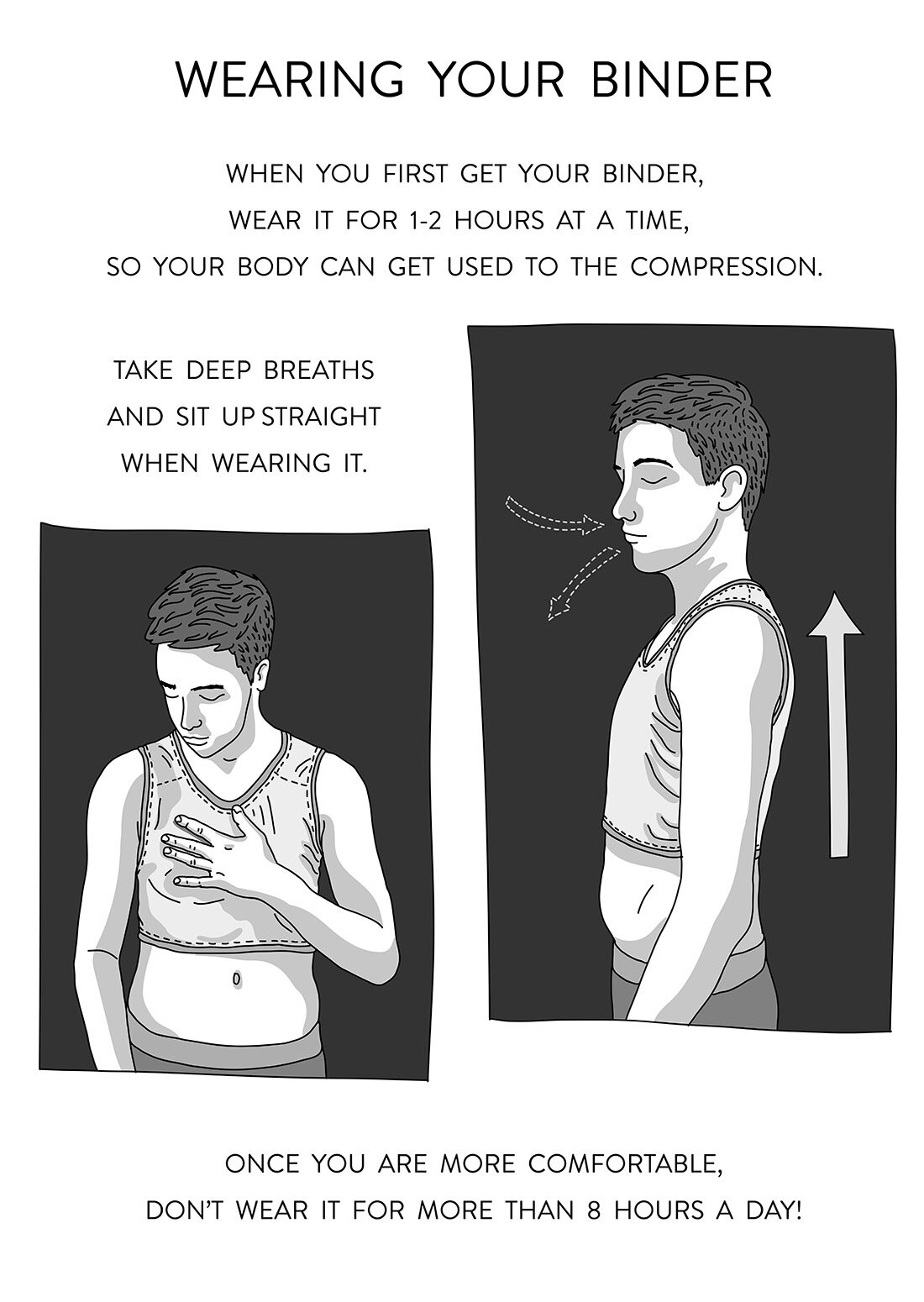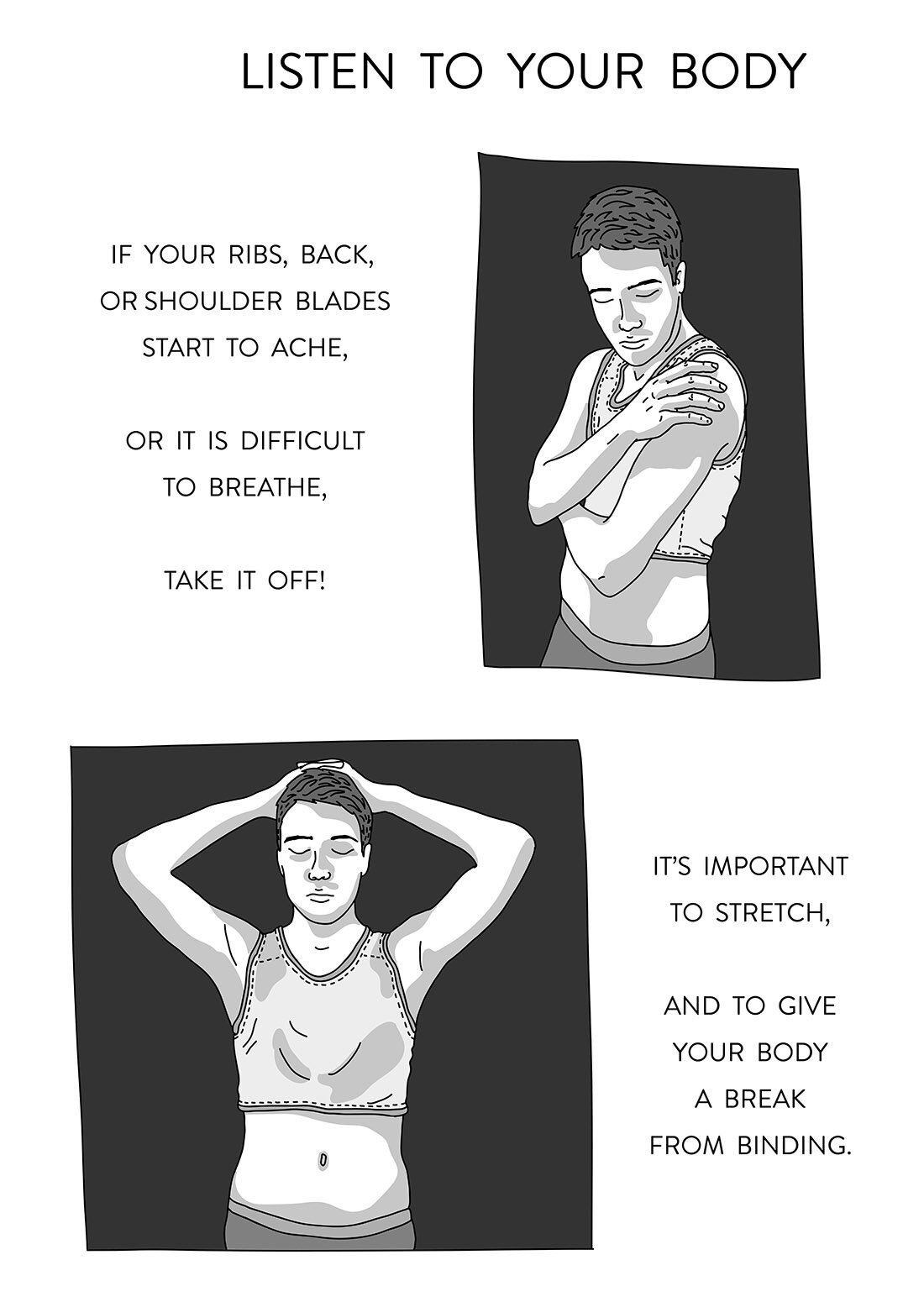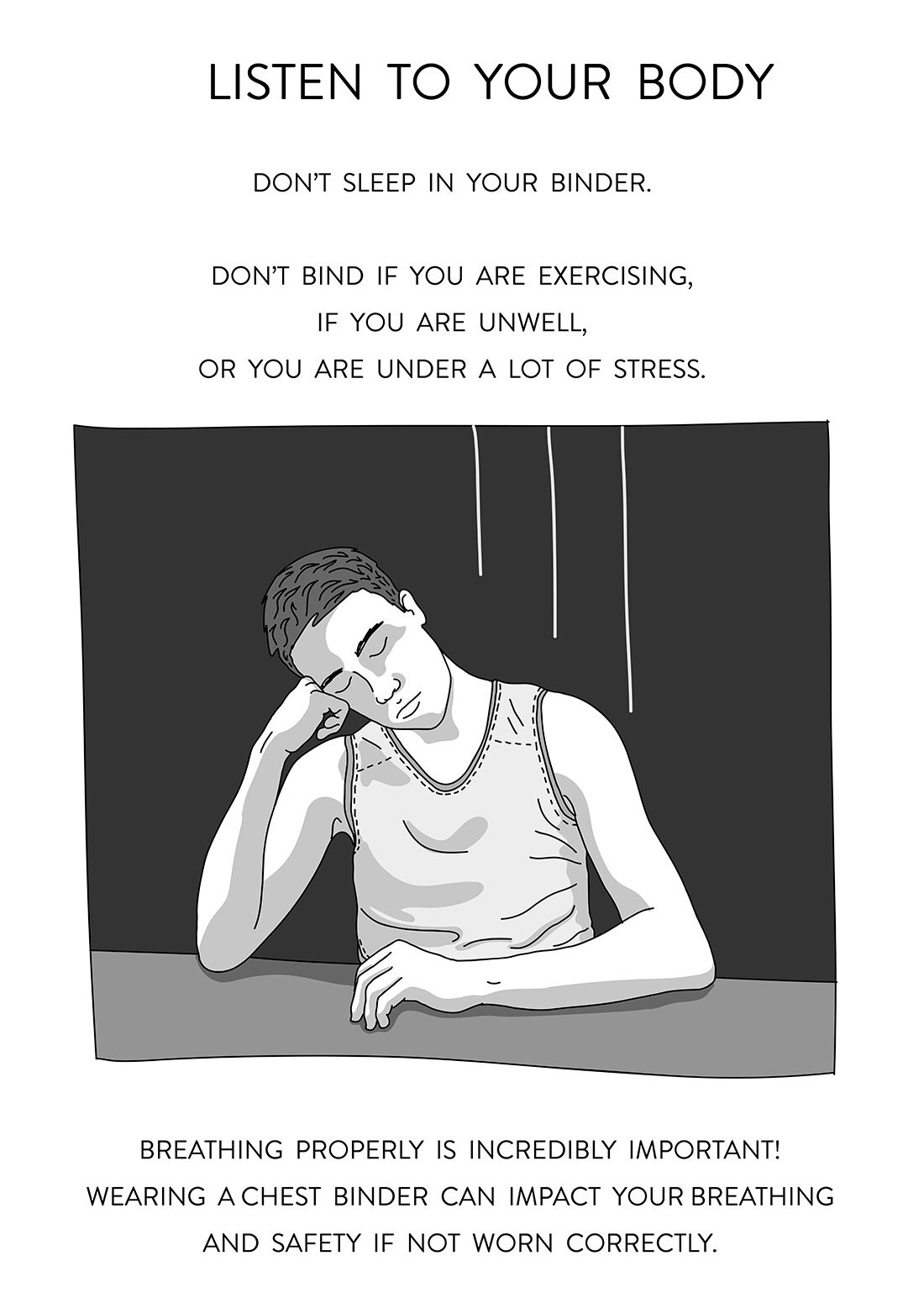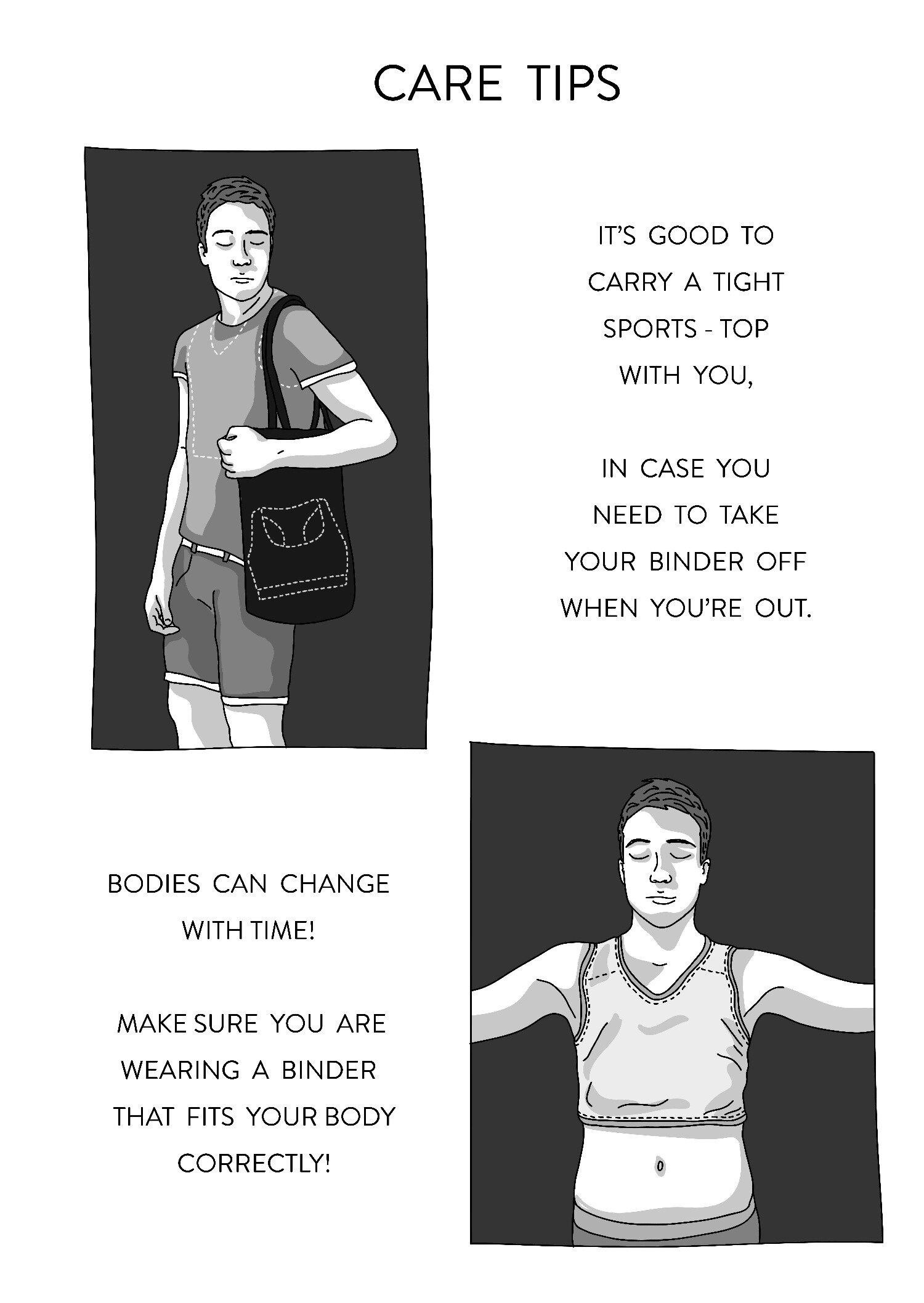Binding
Illustration by Samuel Luke Art
Binding is a way we can engage with our bodies to help us look or feel a certain way. It is about flattening the chest with a tight top called a ‘binder’. Binding is for anyone who wants to bind.
Binding can be really important and some people will bind every day. Others may only bind on specific occasions, like a first date or when wearing that new, sparkly, button down shirt.
Some might try a binder on once and decide it is not for them. Others will never be interested in binding, and all of these options are just fine. The shape of your body doesn’t mean you are one gender or another - only you can know that.
Binding doesn’t mean you identify in a particular way either but if you are looking to flatten your chest for any reason, it’s great to know that binding is an option. Sometimes just having one in the wardrobe for a rainy day can be a confidence booster.
What’s the best way to get started?
Tops that are specifically designed to be binders are best, but if you can’t get your hands on one a tight sports crop tops that don’t restrict breathing or blood flow can suffice. Binders generally look like singlets or tank tops that are made out of a combination of tough and stretchy material. They come in either plain colours to match different skin tones or in fun patterns. You can even get swim binders made out of waterproof material that stay opaque in all conditions. They come in different lengths too: above the belly, across the belly or down to the waist. Different designs suit different people and bodies, and what works for you will also depend on what you feel good in.
It is very important that you get the correct size. Different brands provide very specific measurements for choosing your size. If you are ordering online, avoid guessing and be sure to use a tape measure or a piece of string with a ruler to figure out your size, according to the instructions. There is no substitute for trying one on though but make sure you read store return policies as you may need to return a poorly fitting binder for a different size.
Trying on a binder
Actually getting into a binder can be somewhat difficult and is definitely a skill that improves with time. You can either step into it and pull it up or you can pull it over your head. Each to their own. You can only know what works for you by trying it. As a tip, try not to let the binder roll up on itself.
For that first time, having a trusted person nearby is recommended. It may be a bit awkward but needing the emergency services to rescue you is more awkward.
Once the binder is on, you will probably want to make some adjustments. Arranging your chest to sit how you want it to is part of binding. You may want to flatten your chest towards the armpits and at similar positions to each side. It’s difficult to do this without touching your chest, so if that’s hard for you, try using a t-shirt over your hand. Depending on your body shape, binding can sculpt your chest to look flat, or more like pecs.
Unless you have very tall friends who like to be in your personal space, looking down isn’t going to tell you much how your chest looks in a binder. Check yourself out in a mirror from different angles and try a shirt on over the top to see how you look when dressed. Maybe take a photo to compare how you look without a binder.
A binder will feel tight the first time, so how tight is too tight? If you can breathe comfortably, that’s a good sign it’s not too tight, Assess if it is the kind of tight you can get used but make sure you let the bar very low. You can always go up a size and still get the same effect. Bear in mind that they will loosen a little with wear.
Taking it off for the first time is another skill, and is also worth having someone you trust nearby to call if you get stuck or are having trouble. Don’t worry though, you’ll get the hang of it in no time at all.
The most important part of binding: safety
When binding, it’s important to make sure you’re doing it in a way that won’t do any short or long term harm to your body.
Your chest does lots of important work (including breathing), and contains a lot of important organs. Your lungs and your ribs need to be able to move so that you can provide oxygen to the rest of your body.
It can be tough, but it’s important to make sure you bind in a way that looks after your body. It can be tempting to push the limits of safety, especially if you’re experiencing dysphoria about the shape of your chest. Staying safe is a way of working with, rather than against, your body.
Responsible binding
Limit binding to 8 hours a day. Beyond that is placing unfair working conditions on your body. If you’re a binding beginner, don’t start at 8 hours, go for 1-2 hours to start with and then take it off for at least an hour. See how you feel, and check in with any potential pain or discomfort.
Take regular breaks. Go somewhere private and take your binder off or roll it down. Take deep breaths and let those lungs and ribs have a good stretch. Wave your arms around, sing or whatever it takes to get everything loose and moving.
Listen to your body. If binding is causing you pain, stop binding. Your body is telling you there is a reason that binding is not working right now. We don’t always like listening but your body is your friend!
Duct tape is not good for binding, it’s not safe and is not kind to nipples. Fabric bandages are designed for compressing things like sprained ankles and can get way too tight if you use them for binding. Leave the bandages in the First Aid kit they are designed for.
Don’t bind when exercising. This is when you need to breathe even more than usual. There are other options that are designed to allow for more movement, like a sports crop tops. It’s ok to wear to an over-sized shirt.
Summer time binding. Things can get really hot under there, causing you to overheat and possibly cause skin irritation. When the weather gets warmer it’s extra important to take care of yourself. There are ways to cool off, including baby powder, wearing a t-shirt underneath or just taking longer breaks. The swim binder could come in handy here!
Bodies change. You may be growing, on testosterone and changing shape, or changing in other ways. So keep up with your body and make sure you change binder size when you need to.
Finally, consider going to a trusted GP and getting a physiotherapy health plan. It can be helpful to ask a gender affirming physio about the health of your ribs and chest. Binders work by doing a lot of compression (that’s why they’re so great) but knowing how to stretch, move, and let your body breathe and relax when not binding is an important part of looking after yourself.
A TransHub guide to binding, by Samuel Luke
Where to get hold of a binder in Australia
You can buy binders by going to a shop or you can order them online. The most well-known brands are gc2b and Underworks, who also do a great swim binder.
With some research you can find other brands and there are also lots of video and blog reviews available. Just be aware that some websites use cis models and sell the products as ‘compression vests.
If you can’t afford a binder, our friends at Sock Drawer Heroes have a donation and Pay it Forward program. Local online community groups often include people donating binders. It’s worth making a post to see if anyone has a spare lying around. YouTubers and bloggers often do giveaways too.
If you can afford to buy binders, find one that makes you feel great, and then be sure to donate your old binders if you no longer need it to one of these programs.
Links
A Binding Guide for All Genders and Gender Expressions - Trans Lifeline
Binding 101 - Point of Pride
Binding Safely - Point of Pride
The 6 Best Tips for Binding in the Summer - Point of Pride
Binder Pay It Forward Program - Sock Drawer Heroes

